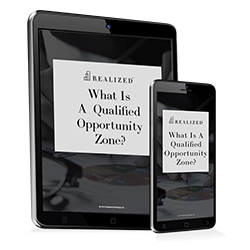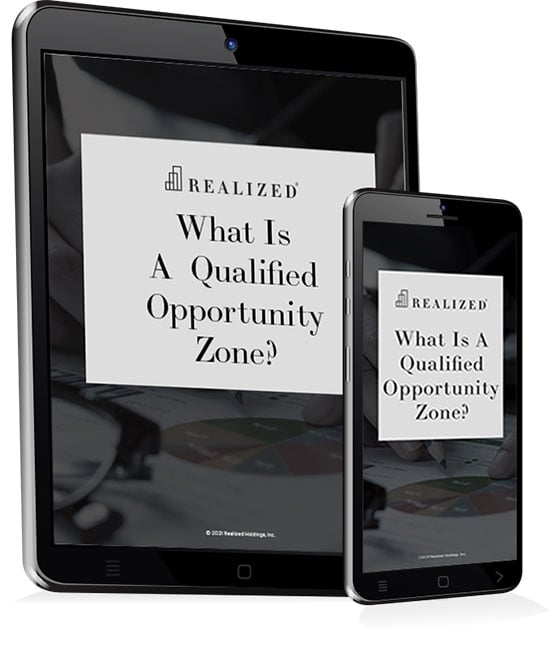
While Qualified Opportunity Funds (QOFs) and Qualified Opportunity Zone Businesses (QOZBs) are an essential part of the Opportunity Zone program, their purposes are quite different. QOFs are in place to fund projects in federally designated QOFs, while QOZBs are directly engaged in trade and activity within these locales.
But in the words of that infamous song: “You can’t have one without the other.”
QOZBs are meant to help boost economic development within Qualified Opportunity Zones (QOZs); the program, after all, is a community development initiative. And, without those QOFs, those businesses might not have enough capital to operate and create jobs.
So, in discussing Qualified Opportunity Funds vs. Qualified Opportunity Zone Businesses, it’s important to understand that these concepts have the same goals: To assist lower-income areas while providing a viable tax-deferral tool for investors.
The Foundations of a QOZB
Simply opening a restaurant, retail center, medical practice, or other entity within a QOZ doesn’t automatically make it a QOZB. The Internal Revenue Service (IRS) frowns on QOZBs that might own or operate a private or commercial golf course, country club, massage parlor, hot tub or suntan facility, gambling facility (such as a racetrack or a casino), or liquor stores. In other words, “sin” businesses.
Additionally, the IRS has some fairly strict requirements when it comes to defining a QOZB, such as:
- At least 50% of service hours must take place in a QOZ; OR
- At least 50% of total compensation must be paid to employees or independent contractors working in a QOZ; OR
- At least 50% of tangible property and business functions must be in the QOZ (entity operations).
For example, if Friendly Animal Veterinary Clinic sets up a practice in a QOZ, it can qualify as QOZB, as long as the doctors, administrative personnel, and veterinary technicians spend at least 50% of their time treating critters on site.
Or, maybe Friendly Animal Veterinary Clinic has larger goals -- it wants to open and operate clinics throughout the region, while operating from a QOZ-based headquarters location. As long as at least 50% of the payroll is directed to employees or contract workers, the company is a QOZB. The same holds true if at least half of the clinic’s tangible property and business operations are situated within the QOZ.
The QOF --Funding the Businesses
As a reminder, a Qualified Opportunity Fund is:
- Set up as either corporation or partnership, with the specific goal of investing in a QOZ
- An entity that annually files a Form 8996 with its federal income tax return
- An entity in which 90% of its assets are situated in a QOZ
Now, let’s take a look at this.
The above is a visual representation of methods through which a QOF might invest in a QOZB. Here’s how it would work, in a real-life situation.
The fictitious Positive Critter Opportunity Fund is a Qualified Opportunity Fund, launched to support veterinarians who want to set up QOZ businesses. The QOF decides that Friendly Animal Veterinary Clinic is the perfect QOZB for its purpose, and must decide on one of the three types of investment choices, clarified below.
Qualified Opportunity Zone Business Property. In this scenario, “property” means “tangible” property, which is (obviously) situated in Qualified Opportunity Zones. This category can include anything from stethoscopes, examination tables and computers, to the real estate from which multiple clinics treat animals, or the company oversees operations.
However, as with anything pertaining to the Opportunity Zone program, calling something QOZ property isn’t that simple. If the Positive Critter Opportunity Fund decides to invest in a QOZ-located building for Friendly Animal’s headquarters, the fund must adhere to “substantial improvement” requirements. “Substantial improvement” means that the QOF is required to double a QOZ property’s adjusted basis, or original costs or purchase and renovation, within 30 months of acquiring property (less the land).
This works for real estate, but how does the idea of “substantial improvement” work with property investment in the form of equipment? Equipment can be part of that adjusted basis, as buying new equipment -- or renovating current equipment -- can add to a business’ substantial improvement bottom line. For example, the copy machines and computers acquired for Friendly Animal’s headquarters, or the cages and surgical equipment bought for the clinics are directly linked to the functionality of this business, thereby improving it.
What if the Positive Critter Opportunity Fund isn’t all that interested in a direct property investment? Maybe the QOF is more interested in the operations side of things, or simply wants to provide capital to improve property, rather than having a hands-on role in doing so.
The good news for PCOF (and other QOFs) is that the 90% asset test can also be fulfilled through investment in Qualified Opportunity Zone Partnerships (QOZPs) or Qualified Opportunity Zone Stock (QOZS). Friendly Animal Veterinary Clinic -- or developers involved with improving the real estate -- can issue either partnership interest or corporate stock for PCOF to acquire.
Qualified Opportunity Zone Partnership. If PCOF wants to go the partnership route, it needs to meet the following requirements:
- It must pay all cash to acquire the partnership interest (after Dec. 31, 2017).
- It must ensure that the partnership is a QOZB, or organized for purposes of being a QOZB, at the same time the partnership interest was issued.
- Friendly Animal must remain a QOZB partnership, during PCOF’s holding period.
The Positive Critter Opportunity Fund can also partner with other companies to help substantially improve the veterinary clinic’s property, without directly handling either real estate or development. In this case, the QOF would operate as a silent, or limited, partner, supplying capital to the developer, which would, in turn, do the hands-on work.
Qualified Opportunity Zone Stock. Rather than working with a partnership interest, PCOF might want to supply equity by acquiring “pieces” of Friendly Animal Veterinary Clinic company, made available through an equity stock offering.
The QOF can do this, with the following requirements:
- It uses all cash to acquire stock, either directly from the company or through an underwriter (and does so after Dec. 31, 2017).
- Friendly Animal is a QOZB at the time of the stock’s issuance, or is organized for purposes of being a QOZB.
- Friendly Animal remains a QOZB during 90% of PCOF’s holding period.
It might seem as though investment through Qualified Opportunity Zone Stock and Qualified Opportunity Zone Partnership interests are similar. They are -- the difference is with the set-up of both QOZB and QOF.
Different, Yet Not
The title of this blog might make it seem as though QOFs and QOZBs have an adversarial relationship or, at the very least, are very unlike. It’s true that these concepts have different purposes, but they ultimately are in place for the same community enhancement goals.
From the investor’s point of view, the key to successfully investing in the Opportunity Zone program is to ensure that the targeted funds and businesses meet IRS requirements. Failure to understand the issues could mean down-the-road tax problems.



